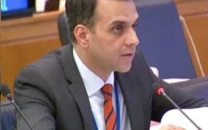Bleeding SOEs: the tortuous road to privatisation
Privatising large SOEs in strategic sectors always proves to be very complex transaction

Government enterprises such as PIA get a lot of press. This is because these debt-ridden white elephants are a major drain on public finances and require regular bailout packages from the federal government, exposing its balance sheet to unnecessarily high risks of insolvency.
Efforts in the past to manage state-owned enterprises (SOEs) using a holding company approach, Sarmaya Pakistan Limited (SPL), didn’t bear any fruit – thanks to the pork-barrel politics involving these eternally loss-
making enterprises.
In fact, the majority of our SOEs are beyond reforms now and the only way forward is to fast-track the privatisa-
tion process.
In contrast to the notion that privatisation is a very complex process, the first step in privatisation is relatively simple – separate all SOEs from line ministries, strengthen and set up regulators concerned (including a legal framework for potential privatisation) and make sure there is a regulatory regime apart from policy boards.
Strong regulatory bodies like Pakistan Telecommunication Authority and State Bank of Pakistan have in the past helped turn around public companies after handing them over to private partners. Without such a legal and regulatory framework, any reform effort including privatisation will not meet with success.
The second step is to improve corporate governance and professionalisation of SOE boards as underlying rules, processes, and institutions that govern the relationship between SOE management and their government owners at times have contradictory mandates.
Although good guidelines have been provided by the Public Sector Companies Corporate Governance Rules 2013, there are numerous gaps when it comes to the terms of references for conducting business in board proceedings.
Politicised boards need to be dissolved and professional board members, with extensive local and foreign experience, should be brought in instead of nominating ex-officio secretaries of the line ministry as directors
in public companies.
The autonomy of boards needs to be enhanced by granting more powers to its committees regarding financial reporting, performance monitoring and accountability mechanisms ie power to bring in new management
where needed.
In the past, ministries such as the petroleum ministry and the science and technology ministry refused to let their subsidiaries be controlled by the finance ministry for the SPL project.
Hence, a dual-ownership model shall be more feasible during the transitory period before the privatisation of SOEs where the board/ parent ministry and the finance ministry will share powers for exercising the government’s ownership functions.
So, in the third step, newly appointed boards advise the finance ministry on deciding one of the many possible routes to privatisation: total divestment after competitive bidding on “as is” basis, partial divestment with management or without management control, sale/ lease of its assets, or restructuring to make
the sale viable.
India and the UK have also relied on their respective finance ministries to steer privatisation plan and limit the
involvement of other stakeholders with vested interests.
Restructuring in this step is vital and must be supported by the regulatory legal framework as it involves changing legal structure through newly created special purpose vehicles (SPVs) and splitting off parts of SOEs that could be sold separately.
Some new entity could also be formed for reassignment of liabilities by buying all debt of SOEs and auctioning it at a discount. Some plants or manufacturing units could be shut down and sold, or the government could inject additional equity to modernise it before sale.
For example, the Corporate and Industrial Restructuring Corporation (CIRC) was established two decades ago to clean up the liabilities of government-owned banks as investors are usually not willing to take on large debts, and debt write-downs are needed.
In the 1990s, no bids were received for the sale of Mexico’s airlines but when the government signed a debt renegotiation agreement, the number of bids went up to seven.
In the fourth step, formal valuation of SOEs comes into play but these technical appraisals are often difficult when accurate financial statements are not available. It is better to leave the sale price up to competitive markets, but a baseline valuation may be needed for complex enterprises.
In most cases, an international competitive bidding after prequalification of potential bidders on the basis of their business suffices.
However, the sale of strategic assets to foreign buyers may also involve creation of golden shares, which
include many special rights for the government such as the power of veto over future sale to a new controlling
shareholder.
Privatising large SOEs in infrastructure and other strategic sectors has always proved to be a very complex business transaction and it takes political will to produce positive results.
The government must be blue in the face to get this done or vested interests and resistance to privatisation within public companies will put this reform agenda on the back burner, again.
THE WRITER IS A CAMBRIDGE GRADUATE AND IS WORKING AS A STRATEGY CONSULTANT






1724926799-0/Untitled-design-(7)1724926799-0-208x130.webp)












COMMENTS
Comments are moderated and generally will be posted if they are on-topic and not abusive.
For more information, please see our Comments FAQ